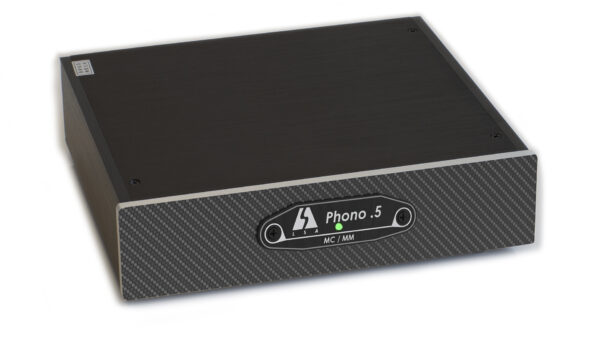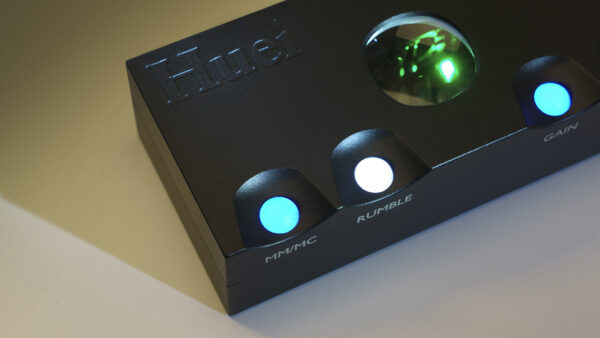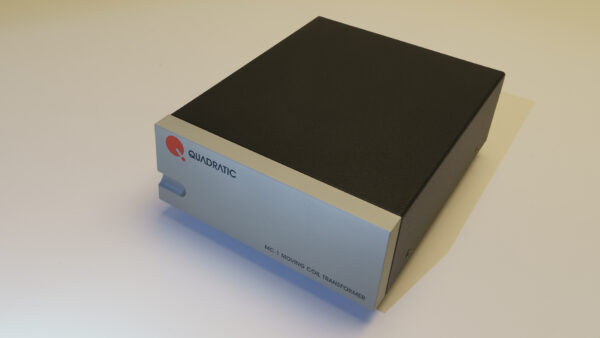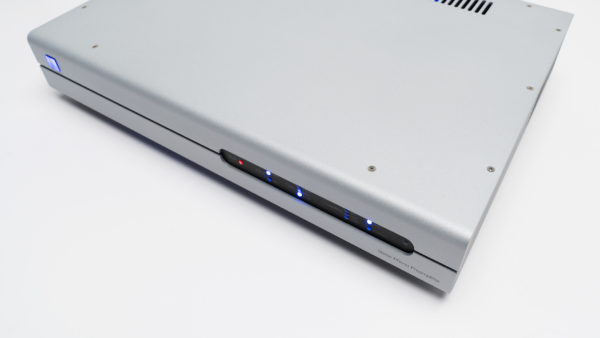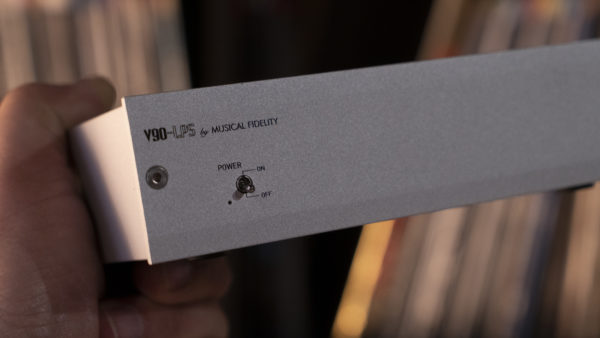If I were to sum up this entire review in a sentence, I’d say “just go buy one.”
That’s a tough call from my listening chair with your 45 thousand dollars, isn’t it? I’ve been living with Pass Xs components for a long time now, and they are the best of the best. All three of these components have taken me somewhere sonically that I’ve never been before, and that’s the primary requirement for a high dollar item in my book. For me to think of asking you to consider audio products that cost more than what my parents paid for their house 35 years ago, they have to provide performance way beyond what you’d expect, and hopefully way beyond what you’ve experienced.
Keeping that in mind, enjoyable aesthetics, quality and reliability beyond reproach are also big factors to consider. I’ve heard some good things produced in minute quality, but in order for you to plunk down your hard-earned cash, you should be getting service, support, and secondary market value as well, because now and then you might want to trade that Ferrari in on an Aston Martin and you shouldn’t have to lose your whole wardrobe to do it. Your shirt, maybe, but not the whole closet. The Pass Xs Phono accomplishes all of these goals, flawlessly.
Listening to an old Go West album from the ’80s (The days of big hair and shoulder pads to the rest of you) the Pass Xs Phono exceeds anything I’ve yet heard regarding analog playback. Insert whatever audiophile cliché you’d like, the Xs Phono is in another galaxy entirely. It is a phonostage without compromise.
Whatever parameter of sound reproduction I can think of, the Xs Phono handles it way better than anything I’ve ever experienced. Quieter – yep. More jump factor – by a long shot, smooth and extended – that too. Micro, macro and whatever other dynamics you can think of, the Xs Phono has buckets. The Xs Phono is brilliant even on the shittiest records I own. That’s what makes a premium component stand out for this reviewer – something you can enjoy playing every record in your music collection, not just a handful of audiophile standards.

Making the jump to well-recorded albums is nothing short of a revelation. Tracking through familiar audiophile classics and well-recorded daily drivers again uncloaks detail after detail that’s never quite made it to the forefront, no matter the cartridge. And with nearly a dozen cartridges on tap from the $95 Shure M97 all the way up to the mighty $10k Koetsu Onyx Platinum, all deliver the most incredible performances of their tenures here.
Where the Koetsu often has a tendency to sound slightly warm, mellow and even a touch rounded off in the area of finest details, it becomes a different animal when presented by the Xs Phono. It’s like putting the best gas you can get your hands on in a turbocharged car; the Xs Phono has more horsepower. The Koetsu, with a sound I thought I was intimately familiar with takes on an entirely different meaning with this phonostage; it’s now more extended with deeper and more substantial bass response than ever before, yet it still has all the yummy midrange these cartridges are known for.
Details, details, details
There are a few great phonostages on the rack here, all fantastic for the MSRP, from some of the usual players, but the Xs Phono surpasses the sound quality of what we’re familiar with and takes an all-out assault on what a premium phonostage should be for the analog maniac. And if you are one of those maniacs, you know what I mean. Even down to the grounding lugs.
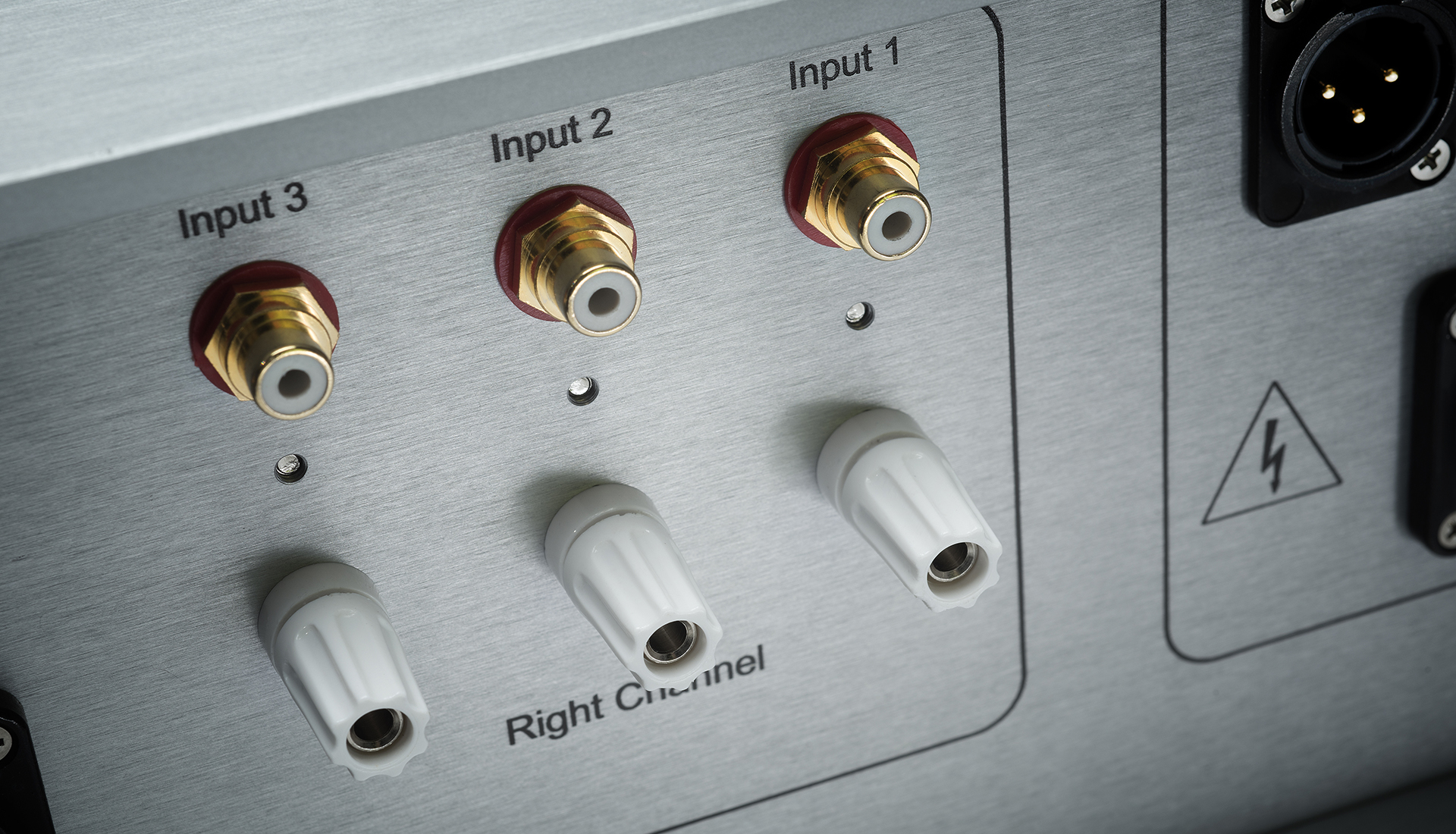
No other manufacturer I’ve seen has addressed (yet) offers a separate ground lug for each one of its three inputs. This may seem like a wacky first-world issue, but hey, if you’ve got the scratch for three primo turntables and a phono stage to match, your hierarchy-of-needs pyramid gets tilted off of its axis by stuff like this. It’s so convenient and cool that the Pass team has not overlooked even this smallest of details in the quest for analog perfection.
The only thing you might be annoyed with is the lack of balanced inputs or an EQ button for early Decca and Columbia pressings. Selfishly, I have no records requiring this, so it wasn’t an issue. A quick inquiry to Pass Labs’ Desmond Harrington confirms what I thought. Harrington mentions that they didn’t feel the balanced inputs were much of a big deal because “until they put center taps on cartridge coils they aren’t truly balanced,” and that adding different EQ would have added more complexity (i.e. noise, etc.) to the circuit.
Before you press the angry button on your computer’s keyboard (a great F10 shortcut in the latest version of Word) here’s where a big part of the Xs Phono’s cost is derived. Yes, it is an enormous dual chassis preamplifier tethered by a pair of massive cables to a power supply bigger with more capacity than all the surround sound receivers in your average Best Buy store, but it doesn’t stop there. The Pass Xs Phono isn’t just a dual mono design; it’s a triple dual mono design!
Because each phono input has its own discrete gain section, what we might perceive as input selection is just selecting which gain path to use. This is a big part of why the Xs Phono costs what it does; it’s actually like getting three separate phonostages in the same chassis. This avoids any switching involved with the delicate cartridge signal. Choose the optimal gain, loading, and capacitance settings, and press the “save” button to keep everything in check. Then you can switch between tables at will.
With settings firmly in place, experimenting with different loading options or different cartridges is incredibly easy; moving the settings around for a particular setup can be used while listening, yet if not saved will get you right back to where you were. As you can imagine, this is the perfect phonostage for someone evaluating cartridges on a regular basis!
Still… you turn me on
The Xs Phono stays powered up, drawing minimal power from the AC line. (Unlike the Xs 300s which draw 1,000 watts each) Loading settings at 30, 50, 75, 100, 140, 160, 250, 330, 500, 1k and 47k ohms, should leave no stone unturned when combined with capacitance settings of 100, 200, 320, 430, 530, and 750pf. Ditto for three gain settings: 56dB, 66dB, and 76dB. Did I tell you how quiet the Xs Phono is? It’s so quiet; it’s Vantablack. For those of you too busy to Google it, Vantablack is now the blackest thing there is. Even more incredible than that blacker than you’ve ever experienced black background, the tonal gradation that the Xs Phono delivers is wide. The smoothness at which the music fades to black is astonishing.
Before you pooh-pooh the 47k setting, here are two things to keep in mind: you’ve never heard just how damn good a $95 Shure M97 sounds till you hear it through the Xs Phono, and the Grado Statement 2 moving iron cartridge. It’s $3,500, and though it loads at 47k like an MM cart, it has a 1mv output.

Much as I love the Koetsu sound, this analog miracle from Brooklyn has such a lovely, delicate, yet full-bodied sound, this has quickly become my go-to cartridge with the Xs Phono. Thanks to Harry Weisfeld at VPI, the Shure M97 with a Jico MR stylus combined with the Technics SL-1200 featuring ZuAudio and TimeStep mods, combined with a Rega RB-301 tonearm makes for a stunning daily driver through this preamplifier. It’s perfect for bargain basement finds, and a beautiful way to check those budget discs after they’ve been thoroughly cleaned before trusting them to one of the big-bucks cartridges.
Quick, Quiet and More
We’ve established the super quiet background by which analog sounds are delicately and effortlessly rendered via the Xs Phono. It’s also dynamic as hell. No matter what cartridges you possess, the Xs packs a wallop. Going all the way back to my collection of Sheffield and JVC direct to disc LPs, and spinning Dave Grusin’s Discovered Again! it’s impossible to ignore how much sheer slam this phonostage can provide.
In combination with the Xs Phono’s zippy transient response, it also accelerates and decelerates on musical notes with the voracity of an F1 car hitting pit lane and going from about 160mph to pit speed instantly. This lack of overshoot at the beginning and end of musical notes makes for an incredibly open portrayal of music while eliminating fatigue. The Xs Phono has all the “airiness” that vacuum tubes are famous for, yet none of the slight smear that nearly all tube preamplifiers seem to have in comparison. The final result is a pureness of tone that inspires wonderment every time you sit down to play records.
Don’t fall in love; she’s a beauty
If you are a crazed analog enthusiast with multiple turntables, tonearms and premium phono cartridges, I know you’ve got the dough to afford the Pass Xs Phono. So, what are you waiting for? Buy one. Right now. It’s so good, you can’t afford not to have one in your record playing arsenal. And it will sound this good forever.
I was flabbergasted at the sonic purity this phonostage delivered the first time I lowered the tonearm on a record, the day the Xs Phono was unboxed. Nearly a thousand LP sides later, this phonostage is just as astonishing every single day. That’s what justifies the big price tag. If you only have one tonearm and cartridge, the price may be a bit overkill for a single cartridge; yet to the Xs Phono’s defense, I’ve heard more than one single-input phonostage with a higher MSRP, not delivering the sonic goods that the Xs Phono does.
Should you have multiple turntables, the Xs will probably feel like a bargain, offering the same amount of musicality to everything at your disposal. If you happen to add an Xs Phono to your system and don’t have multiple turntables, you will before you know it.
You’ve probably guessed that I like the Pass Xs Phono. A lot. Should your investigation reveal the same qualities I have here and the same level of enthusiasm, you can safely tell your spouse and friends that “this is the last phonostage, honest,” and not have to cross your fingers behind your back.
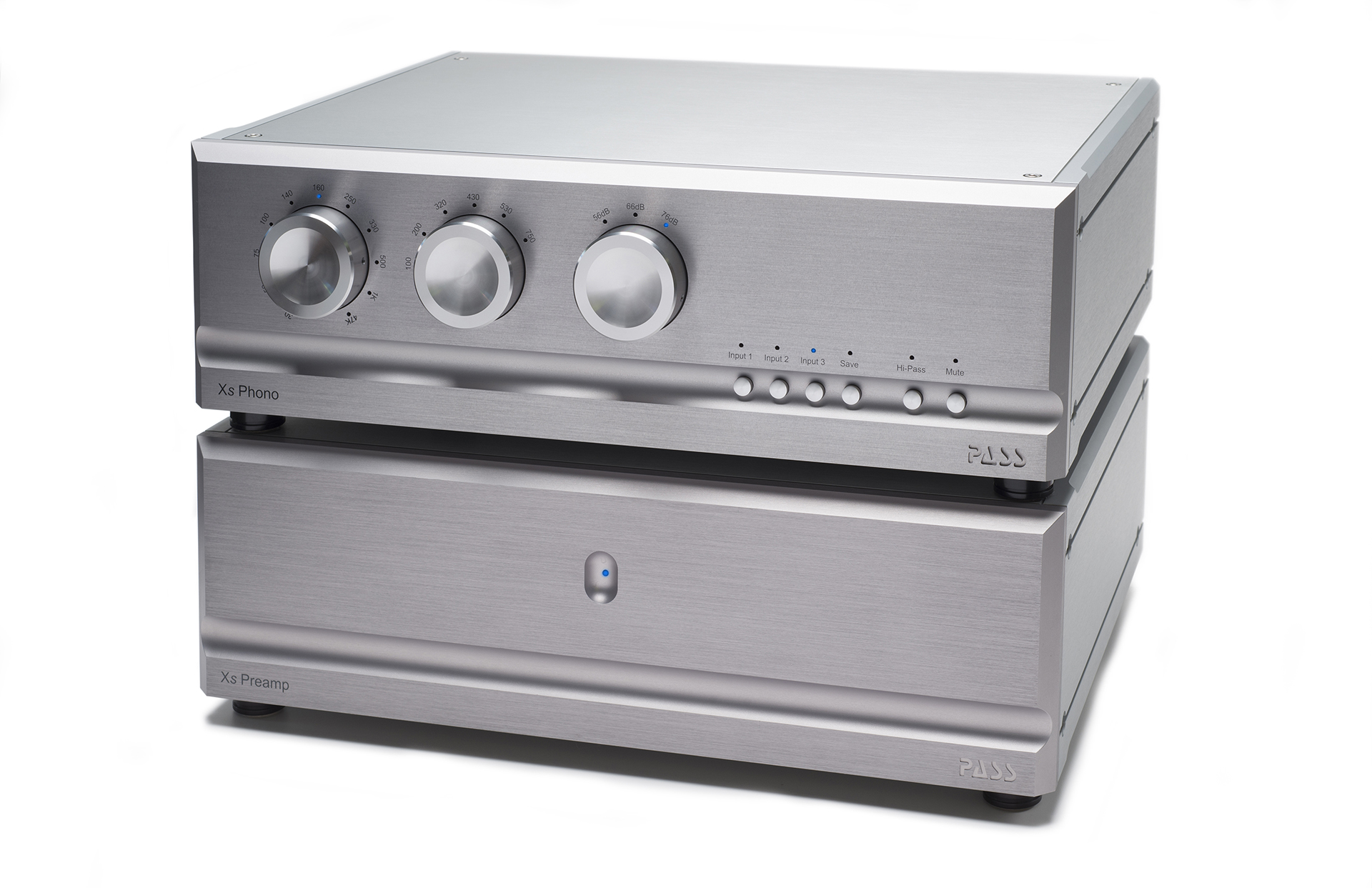
The Pass Labs Xs Phono
MSRP: $45,000
Peripherals
Analog Source AVID Acutus Ref SP/SME V/Lyra Atlas, Grand Prix Audio Monaco 2.0/Tri-planar/Lyra Etna
Preamplifier Pass XS Phono
Power Amplifier Pass XS 300 monos, Pass XA200.8
Speakers GamuT RS5i, Focal Sopra no.3 w/2-REL 212, MartinLogan Neolith
Cable Tellurium Q Silver Diamond, Cardas Clear

